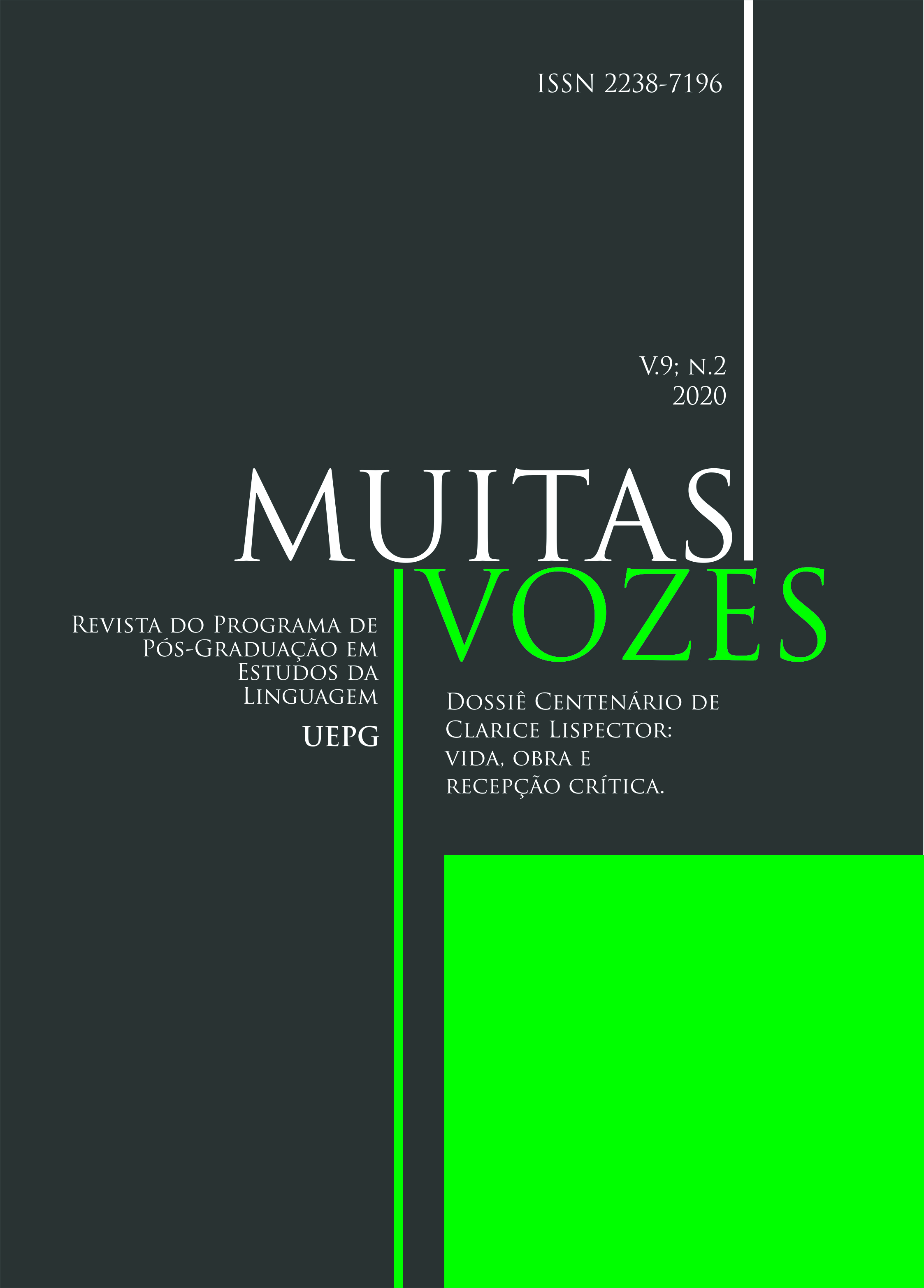A PECADORA QUEIMADA E OS ANJOS HARMONIOSOS: UMA ANÁLISE DO SORRISO DA PECADORA COMO MÁQUINA DE GUERRA
Resumo
Este artigo teve como objeto de estudo a única produção teatral de Clarice Lispector, a peça A Pecadora queimada e os Anjos harmoniosos (1964). O objetivo principal consistiu em analisar o sorriso da protagonista como única via de expressão em todo o ato, como uma manifestação de resistência contra o sistema social que organiza sua morte. A conclusão a que se chegou na análise do sorriso da pecadora é de que ele se manifesta como a pequena máquina de guerra clariceana, subvertendo e alterando a expectativa de punição e restauração da ordem previstas pelo ato condenatório. Considerou-se essa manifestação como uma guerrilha, silenciosa e criativa, que se mobiliza contra o sistema estatal. Nesta análise, valeu-se do pensamento de Gilles Deleuze e Felix Guattari em Mil Platôs, sobretudo no platô 12, 1227 – Tratado de Nomadologia: a máquina de guerra, assim como algumas noções conceituais do Teatro de Crueldade, de Antonin Artaud.
Downloads
Downloads
Publicado
Como Citar
Edição
Seção
Licença

Este obra está licenciado com uma Licença Creative Commons Atribuição 4.0 Internacional.
Transferência de direitos autorais: Caso o artigo submetido seja aprovado para publicação, JÁ FICA ACORDADO QUE o autor AUTORIZA a UEPG a reproduzi-lo e publicá-lo na REVISTA MUITAS VOZES, entendendo-se os termos "reprodução" e "publicação" conforme definição respectivamente dos incisos VI e I do artigo 5° da Lei 9610/98. O ARTIGO poderá ser acessado tanto pela rede mundial de computadores (WWW - Internet), como pela versão impressa, sendo permitidas, A TÍTULO GRATUITO, a consulta e a reprodução de exemplar do ARTIGO para uso próprio de quem a consulta. ESSA autorização de publicação não tem limitação de tempo, FICANDO A UEPG responsável pela manutenção da identificação DO AUTOR do ARTIGO.



